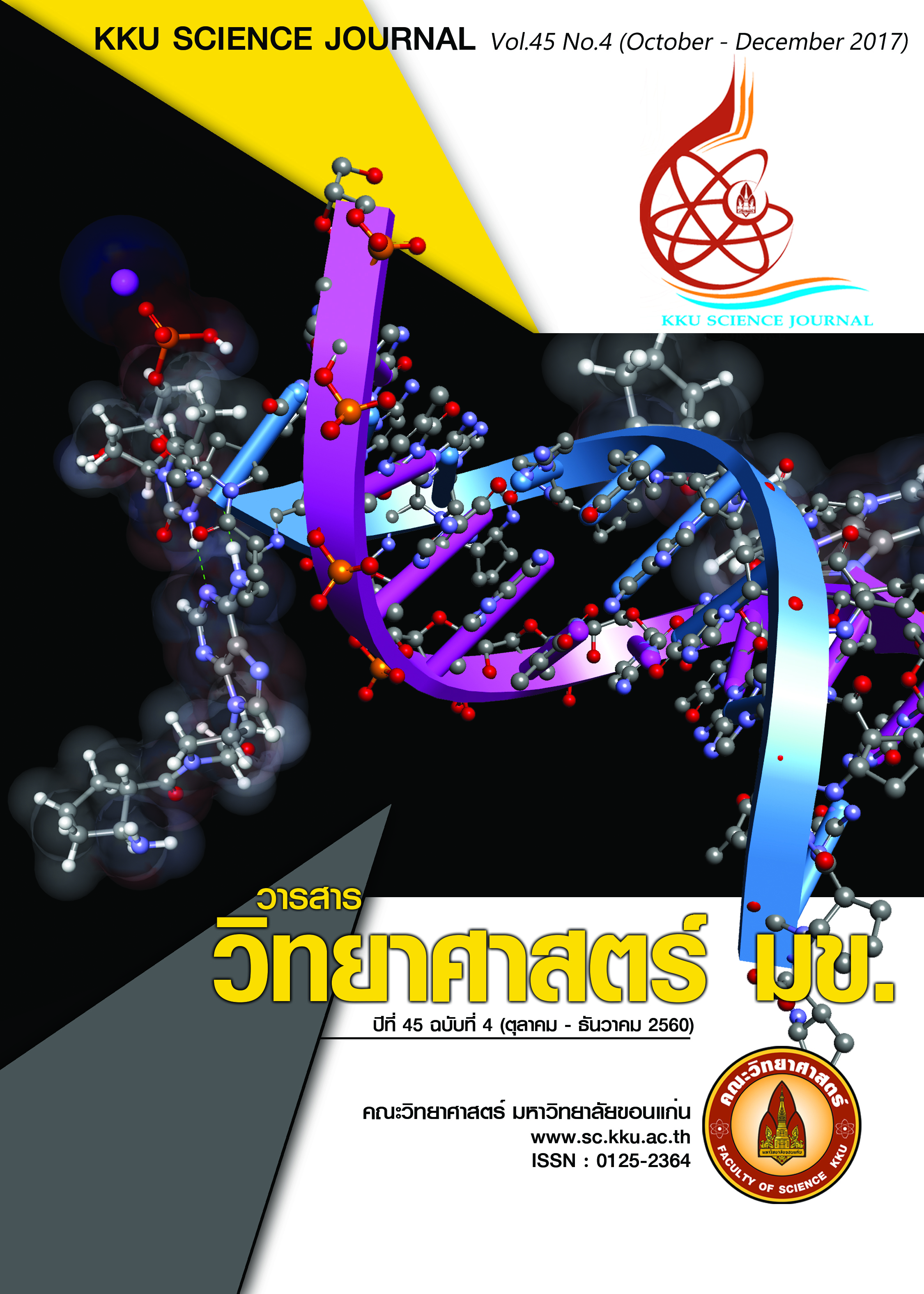Antagonistic Effect of Staphylococci of Extracts From Some Local Plants in Nakorn-Ratchasima Province
Main Article Content
Abstract
A group of staphylococci is commensal of the skin and mucosal surfaces in human and animals. Moreover, members of this group are remarkable in their ability to resist to antibiotics. Therefore, it is necessary to search for antibacterial substances from plants as an alternative drug to control resistant bacteria. The present study aimed to investigate the anti-staphylococcal activity of 58 ethanolic plant extracts from 47 plants species using an agar disc diffusion method for preliminary screening and a broth microdilution to determine Minimum Inhibitory Concentration (MIC) and Minimum Bactericidal Concentration (MBC) values. Among 59 extracts tested, only 16 extracts gave antibacterial activity such as extracts from Limnophila aromatica and fruit of Casearia grewiifolia possessed an inhibitory zone more than the others. For the results of MIC/MBC values, three extracts from the rhizome of Boesenbergia rotunda, fruit of C. grewiifolia and leaves of Rhodomyrtus tomentosa were 0.156/0.156, 0.625/0.625 and 0.312/0.625 mg/ml respectively. Therefore, three of these herbs were classified for a good antibacterial activity with MIC value less than 1 mg /ml. There were 20 plant extracts for the moderate activity (1 < MIC values ≤ 2.5 mg/ml) along with 35 extracts presented the weak activity (MIC > 2.5 mg/ml). The present work indicates that B. rotunda, R. tomentosa, and C. grewiifolia may be the potential plant for further advance research on antibacterial activity.
Article Details

This work is licensed under a Creative Commons Attribution-NonCommercial-NoDerivatives 4.0 International License.


